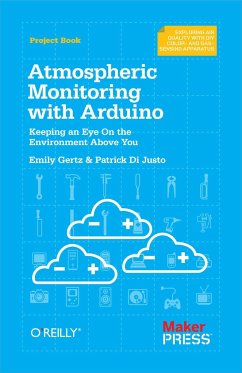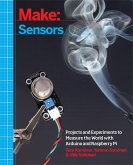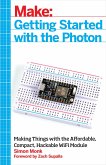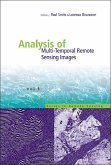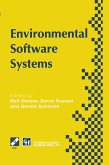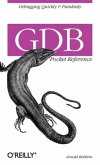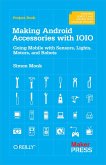Makers around the globe are building low-cost devices to monitor the environment, and with this hands-on guide, so can you. Through succinct tutorials, illustrations, and clear step-by-step instructions, you'll learn how to create gadgets for examining the quality of our atmosphere, using Arduino and several inexpensive sensors.
Detect harmful gases, dust particles such as smoke and smog, and upper atmospheric haze - substances and conditions that are often invisible to your senses. You'll also discover how to use the scientific method to help you learn even more from your atmospheric tests. Get up to speed on Arduino with a quick electronics primer Build a tropospheric gas sensor to detect carbon monoxide, LPG, butane, methane, benzene, and many other gases Create an LED Photometer to measure how much of the sun's blue, green, and red light waves are penetrating the atmosphere Build an LED sensitivity detector - and discover which light wavelengths each LED in your Photometer is receptive to Learn how measuring light wavelengths lets you determine the amount of water vapor, ozone, and other substances in the atmosphere Upload your data to Cosm and share it with others via the Internet
"The future will rely on citizen scientists collecting and analyzing their own data. The easy and fun gadgets in this book show everyone from Arduino beginners to experienced Makers how best to do that."
--Chris Anderson, Editor in Chief of Wired magazine, author of Makers: The New Industrial Revolution (Crown Business)
Hinweis: Dieser Artikel kann nur an eine deutsche Lieferadresse ausgeliefert werden.
Detect harmful gases, dust particles such as smoke and smog, and upper atmospheric haze - substances and conditions that are often invisible to your senses. You'll also discover how to use the scientific method to help you learn even more from your atmospheric tests. Get up to speed on Arduino with a quick electronics primer Build a tropospheric gas sensor to detect carbon monoxide, LPG, butane, methane, benzene, and many other gases Create an LED Photometer to measure how much of the sun's blue, green, and red light waves are penetrating the atmosphere Build an LED sensitivity detector - and discover which light wavelengths each LED in your Photometer is receptive to Learn how measuring light wavelengths lets you determine the amount of water vapor, ozone, and other substances in the atmosphere Upload your data to Cosm and share it with others via the Internet
"The future will rely on citizen scientists collecting and analyzing their own data. The easy and fun gadgets in this book show everyone from Arduino beginners to experienced Makers how best to do that."
--Chris Anderson, Editor in Chief of Wired magazine, author of Makers: The New Industrial Revolution (Crown Business)
Hinweis: Dieser Artikel kann nur an eine deutsche Lieferadresse ausgeliefert werden.

